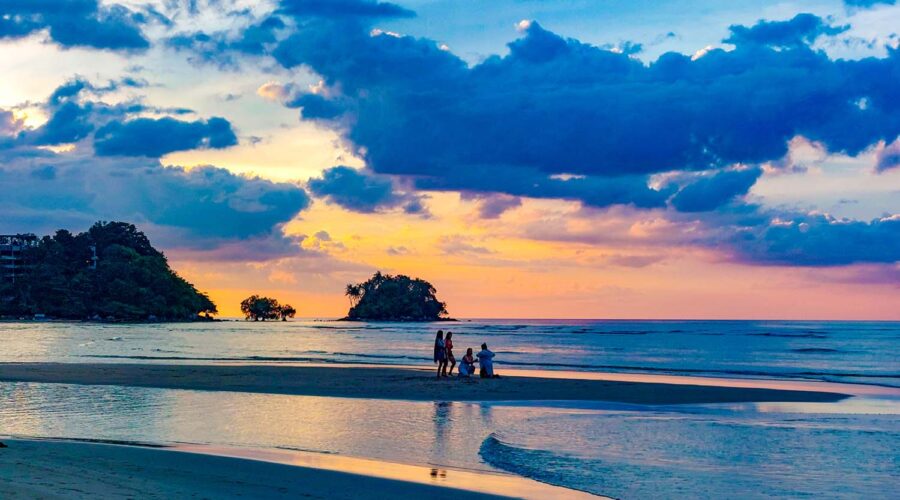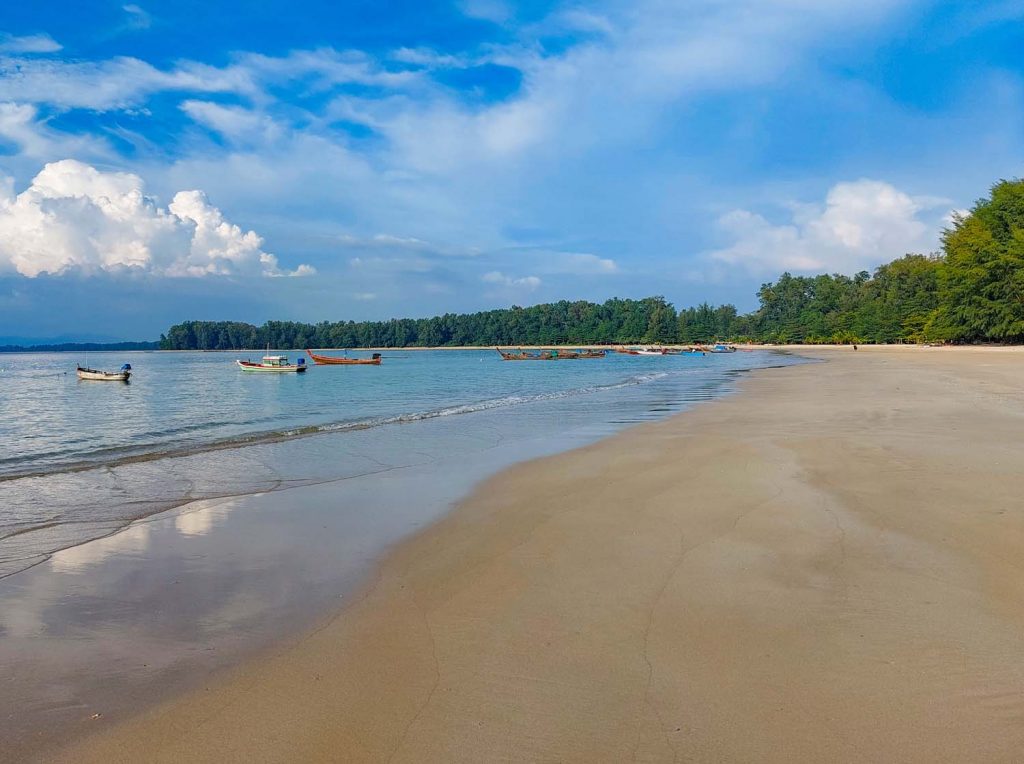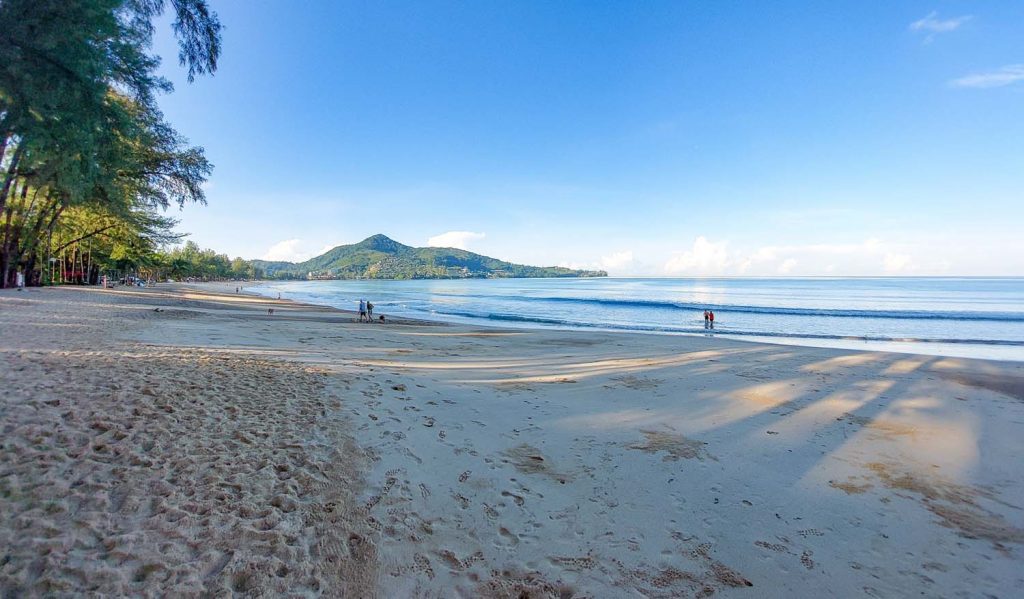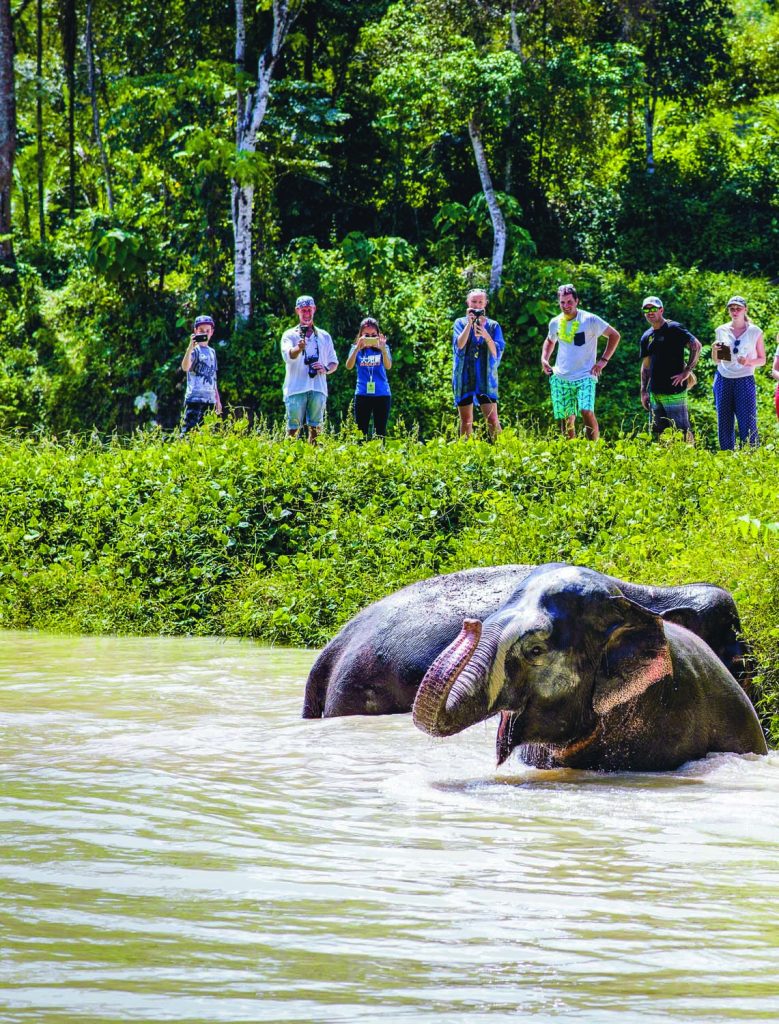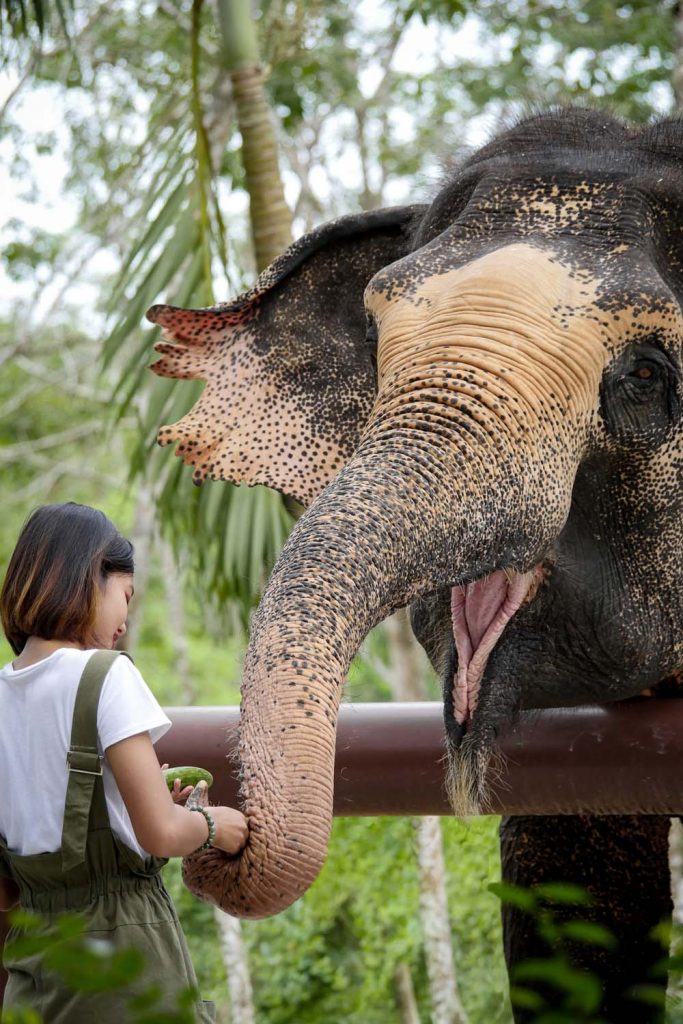Now is the time to visit Phuket
Phuket is open and welcoming travellers once again. Expat Aussie travel writer Michael Cullen provides an update on the Pearl of the Andaman Sea.
US NEWS recently ranked Phuket number 8 in their top 30 “World’s Best Places to Visit.” They raved about its outstanding sights, scenic beauty, food scene, and culture. Other pluses were the choices to fit all budgets for accommodation, excursions, and spa and wellness.
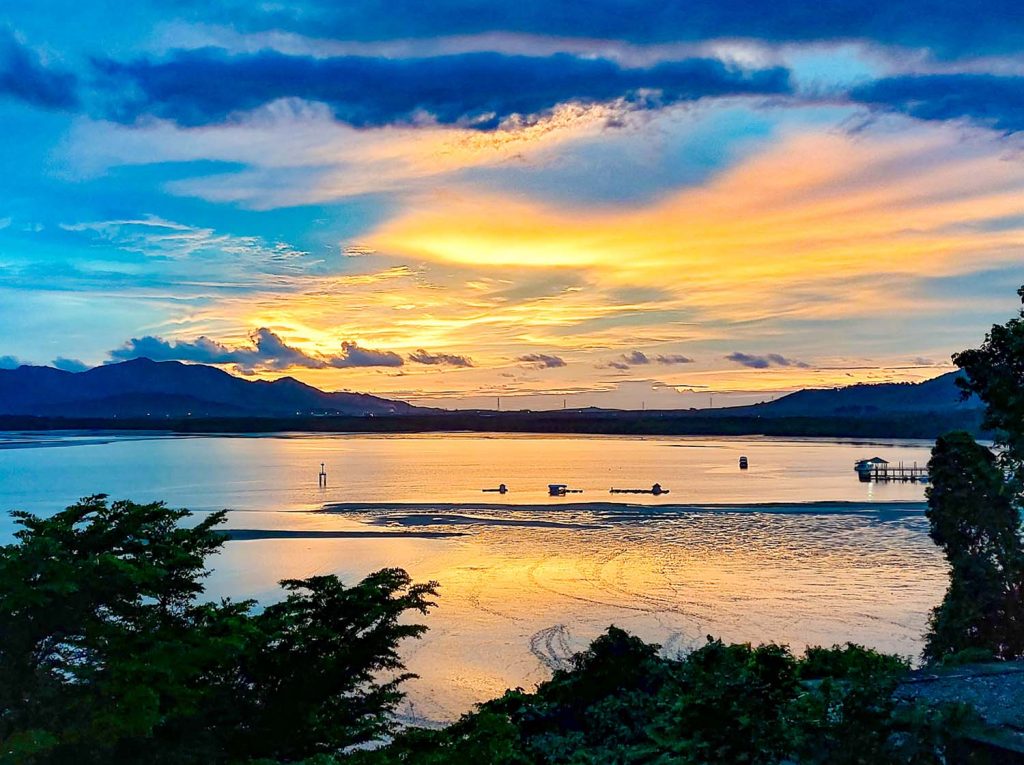
There are also the island’s welcoming locals, outstanding beaches, laidback tropical lifestyle, and easy connections to the surrounding islands. Add to that adventure activities like jungle zip-lining, excellent water sports, family-friendly water parks, and fabulous shopping, to mention just a few attractions. Additionally, Phuket’s international airport means Thailand’s largest island is easily accessed, often with direct flights from your home destination. That’s a lot of positives.
One bonus in the pause of visitors during these last two years is that the island’s natural resources rested and rejuvenated. Always part of its allure, the island’s forests, beaches, coral reefs, and marine and land-based wildlife have thrived and are in the best condition people can remember.
In the post-pandemic world, many travellers look for outdoor activities, and less crowded places to keep them and their travelling companions safe and Phuket offers that and much more.
So read on to learn why now is the perfect time to visit Phuket.
Phuket’s Beaches
Phuket has some of the most amazing beaches in Thailand and perhaps, all of Southeast Asia. Its west coast beaches, in particular, are known for their stunning beauty, fantastic sand quality, clean, calm waters, and the potential for spectacular beach sunsets.
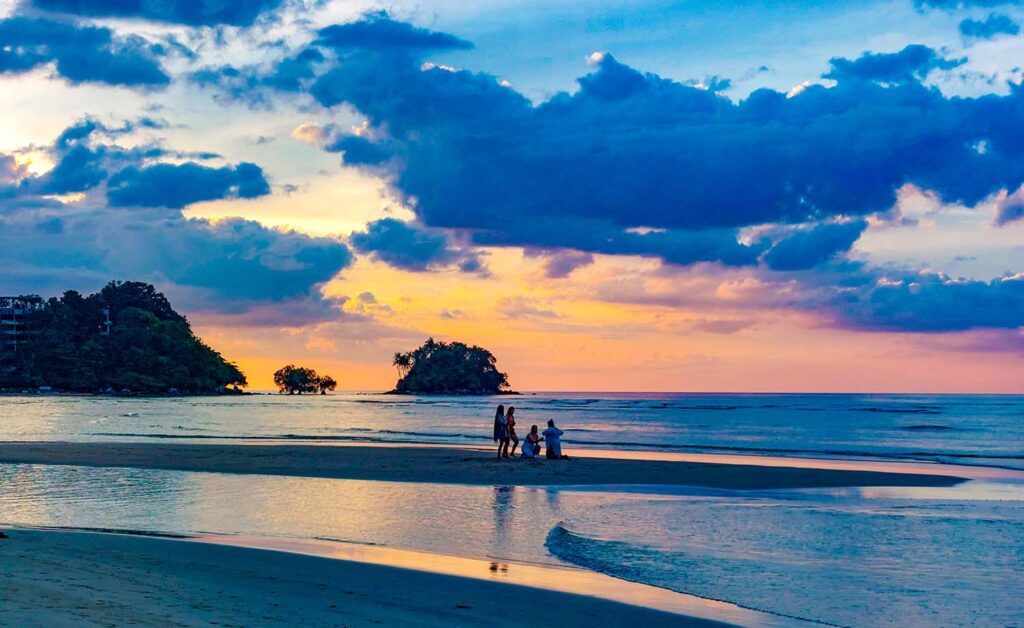
On the lower west coast, Kata and Karon Beaches, with their long, broad expanses of sand, are relaxed, family-friendly holiday locations. Patong’s famous 2.5 km long crescent beach remains inviting, with its water sports plus the choice of longtail and speed boats ready to whisk you out on day trips. Kamala’s 2 km long wide beach with its beginner and intermediate surf breaks remains uncrowded.
Surin, Bang Tao, Nai Thon, and Nai Yang, further north along the west coast, have great sandy beaches and fewer crowds. Nai Yang and neighbouring Sirinat National Park favour those seeking extra space and gloriously long near-empty beaches.
A Wealth of History – Phuket Old Town
It was only in the mid-1970s that Phuket turned its attention to tourism. The island has over 1,000 years of rich stories, including being a major port on the trade route between Europe and Asia in the Spice Trade days. Tin mining through the 19th century saw an influx of Chinese migrant workers, whose influence can still be seen in present-day Phuket. And in recent times, plantations of rubber, coconut, pineapple and palm oil are all actively cultivated.
Phuket Old Town is a great starting point for learning more about the island’s history. Grand historical buildings and museums offer insights, while photographers will delight in the restored shop houses’ Sino-colonial architecture. Rassada, Thalang, Phang Nga, Dibuk, and Krabi roads and the smaller Sois (lanes) branching off is where you will find most points of interest. Take your time wandering these to get a sense of the area and its treasures. You’ll find cool cafes and cute boutiques, plus ‘old world’ authentic eateries along the way to entice and enthral.
Be sure to stop at the Thai Hua Museum on Krabi Road first to get the big picture and delve into the island’s tin mining history (it’s much more interesting than you might think) and Phuket Town itself. It has a fantastic display highlighting the Town Centre’s original buildings and a paper map for self-guided walking tours.
And do return Sunday evenings for the Walking Street Market. Stretching along Thalang Road with the restored pastel-toned Sino-Portuguese houses as the backdrop, this is a market worth visiting. Stalls line this busy walking street with entertainment, food, drinks, and arty knickknacks. Boutiques, cafes, bars, and galleries in some buildings are also open. A great market to sample the diversity of Phuket street food.
Wildlife Encounters
Thailand and other SE Asian countries have a history of native animals being ‘tamed’ and used in industries, including tourism, or illegally sold to overseas collectors. Something the Kingdom has now consciously moved away from. Here are two rescue and rehabilitation project recommendations that will positively connect you with the wildlife.
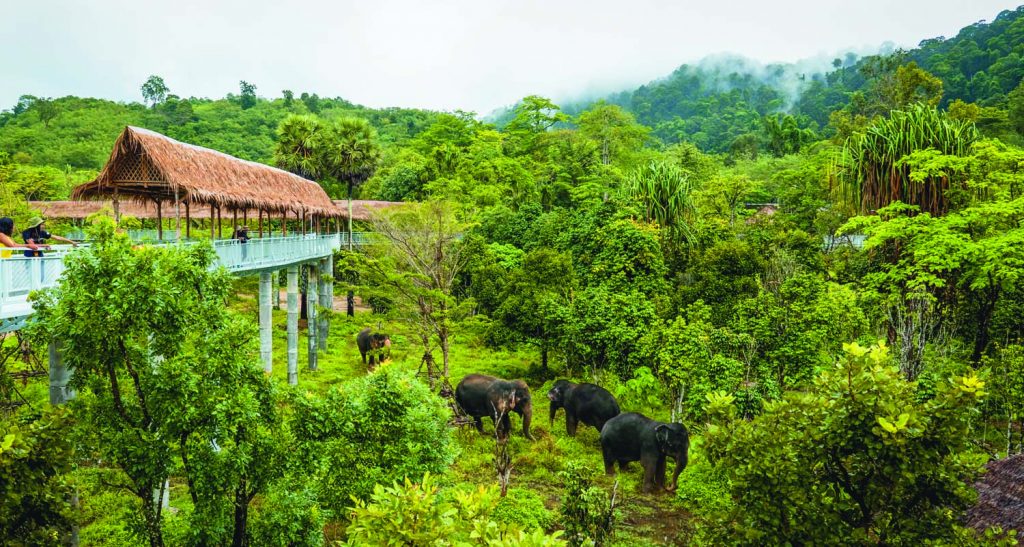
Phuket Elephant Sanctuary is Phuket’s most ethical in its care and treatment of Thailand’s revered pachyderms. There are no riding or bathing with the elephants, yet many opportunities to be close and see these rescued giants being themselves. The sanctuary’s new, 600-metre-long and 6-meter-tall canopy walkway means elephants have maximum freedom to naturally roam, forage, bathe and socialise in the jungle below. Visitors can observe them from above and from a safe and respectful distance whilst hiking through the 30-acre sanctuary on guided tours. There are several other elephant parks on the island but be sure to choose Phuket Elephant Sanctuary if you want the confidence you are supporting the most ethical.
The Gibbon Rehabilitation Project has successfully reintroduced 50 gibbons back to the wild and into the same jungles where these primates were poached to extinction 40 years ago. Visitors of all ages can spend a half-day as a ‘gibbon research assistant’ making nutritious banana leaf food parcels and delivering them to the long-distance feeding system. You do not get up close, as these primates are being readied for the wild. You will hear their stories and learn how to differentiate and understand their high-pitched calls and the hidden meanings in their movements. Visit by advance bookings only.
Temples & Viewpoints
Buddhism is an essential part of Thai culture and its people’s beliefs. Here are two opportunities to respectfully glimpse into this aspect of Thai life.
Big Buddha (Phra Phuttha Mingmongkhon Akenakkhiri) is a 45 meter tall seated Buddha covered with beautiful Burmese white jade marble. The sculpture sits high on a hill and is visible from many southern parts of the island. The views provided over Chalong Bay alone are worth the visit.
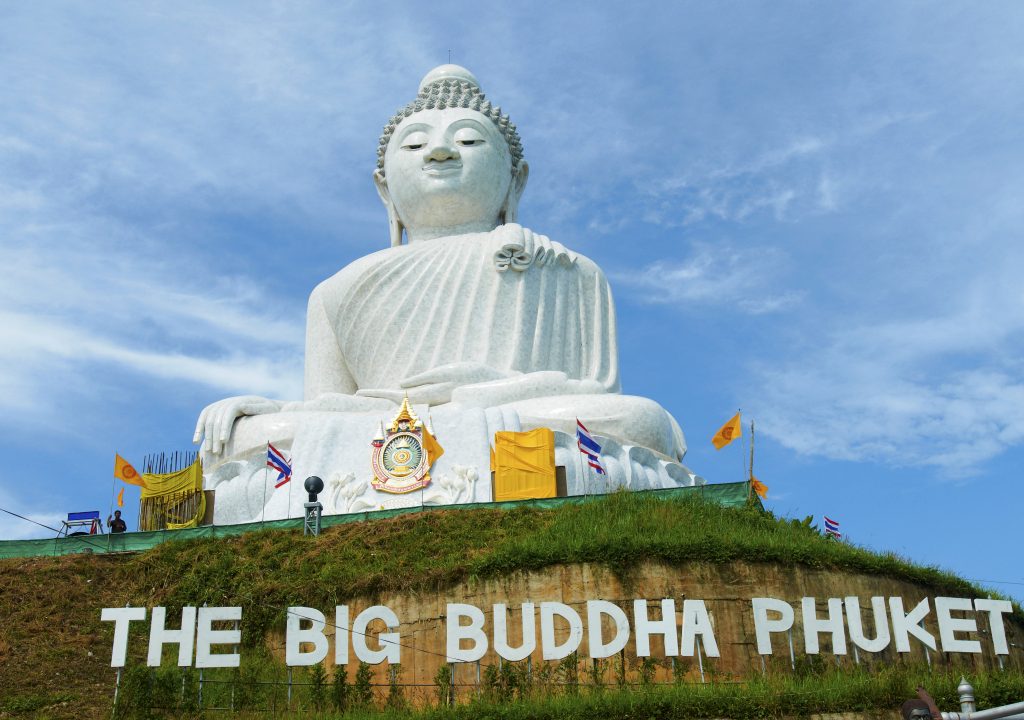
Wat Chalong (Wat Chaitararam) is the highly revered and most significant temple in Phuket. Locals claim to have experienced miracles, and it is known for its healing role in fighting between Chinese secret societies in the late 1800s. The Wat is on the way to Big Buddha, making it convenient to experience the two in one outing.
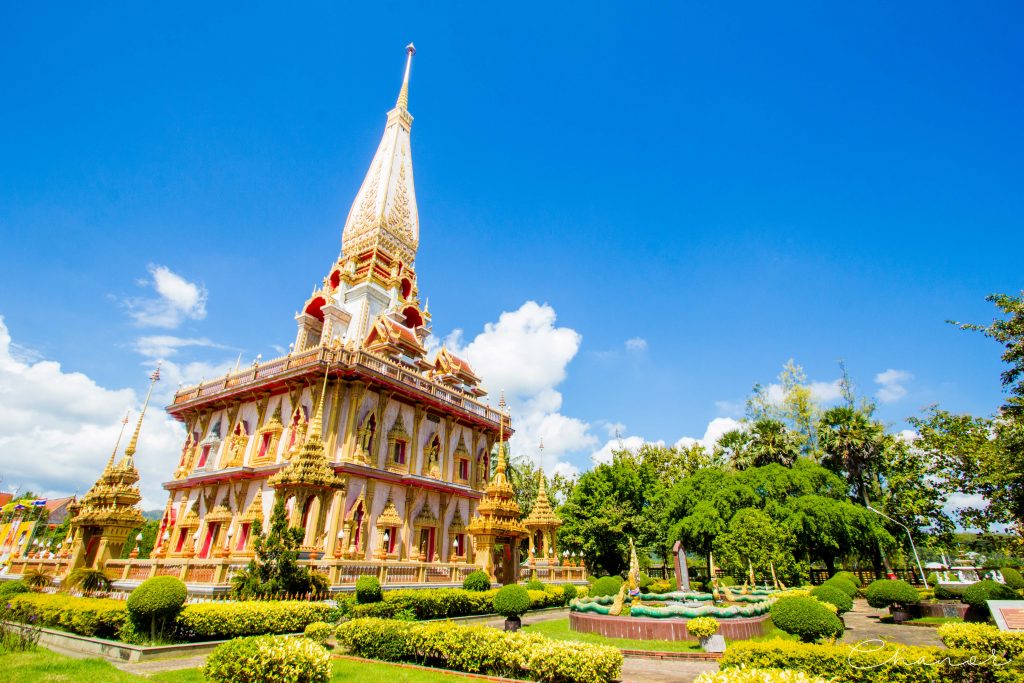
With at least ten viewpoints overlooking the island’s beaches and cities, you can visit a new one every day. Some are harder to access than others, requiring some trekking or scrambling.
Promthep Cape, on the southern tip, is one of the most popular, especially sunsets, and has a large car park. And just 1.5 km north is Windmill Viewpoint, between Nai Harn and Prompthep, with fabulous views west. You can also catch sunrises from there.
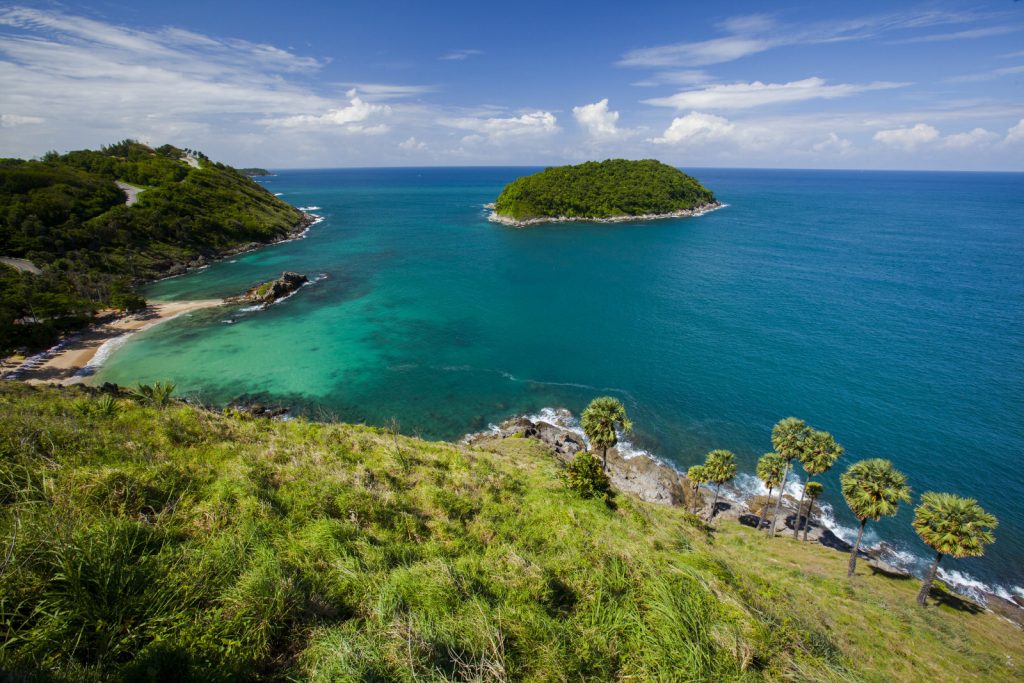
Panwa Viewpoint, also known as Khao Khad Views Tower, offers 360° views over southern and eastern Phuket. This lesser-known viewpoint has ample parking and is located on the way to Cape Panwa. The stairs are a bit of a climb, yet more than worth it once at the top.
Rang Hill lies northwest of Phuket City, providing city and distant beach views. Photographers might prefer to visit in the early evening, as the lights start to twinkle across the island. Rang Hill is also an excellent spot for dinner on the open restaurant terraces with panoramic city views.
Island Day Trips off Phuket
Phang Nga Bay, with its limestone karst outcrops and islands, is a well-known and easily accessible day trip from Phuket with many operators ready to take you. Ko Phi Phi and that famous ‘beach’ from the similarly named movie is also open, though with some access restrictions. Visitors can not swim from the beach now, so this is more photo opportunity than reliving the movie scenes.
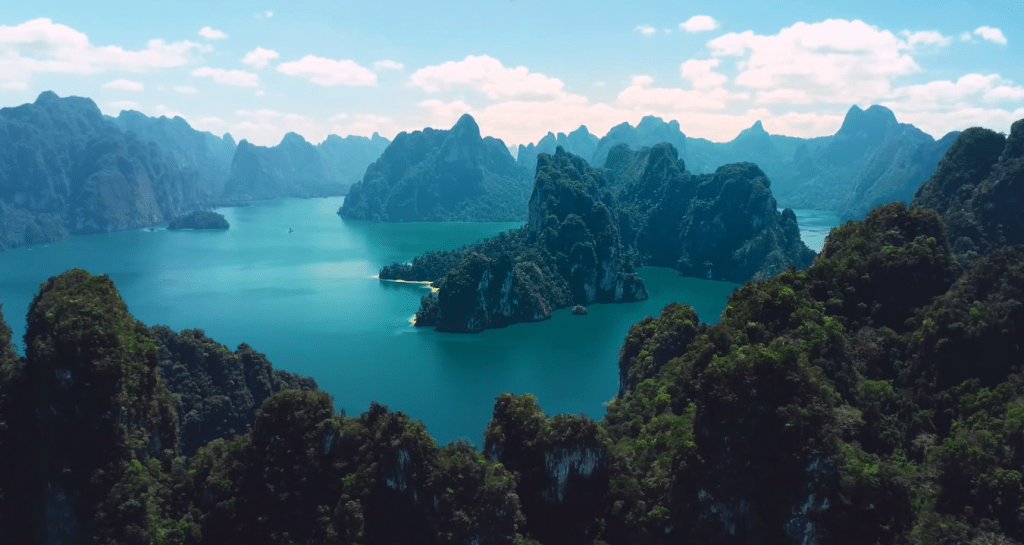
If you want somewhere not so familiar, consider some of Phuket’s 32 smaller islands, some just 15 minutes by boat. Koh Racha and Koh Hea (Coral Island) are popular, as are Koh Maiton and Koh Khai, with visits that include swimming, snorkelling, and other water fun from picture-perfect beaches. Take your pick of a longtail boat, speedboat, or catamaran tour for day visits.
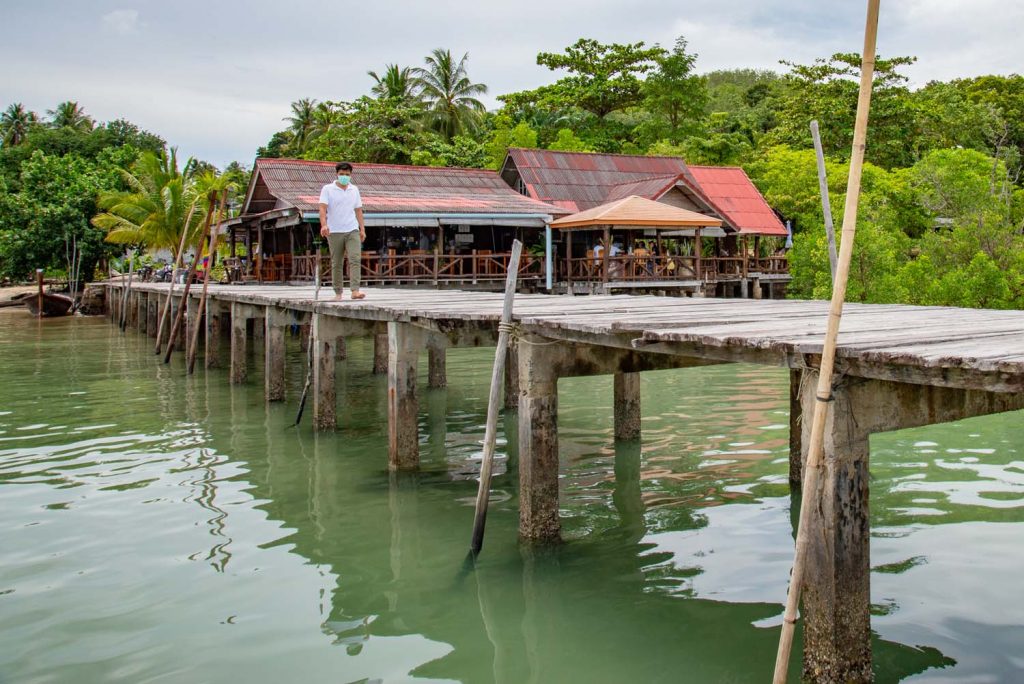
Koh Yao Yai and Koh Yao Noi are two larger, less-visited islands in the middle of Phang Nga Bay. These are not tourist islands, although each offers a choice of family-run guesthouses and discreet high-end resorts. Experience island life as people go about their self-sufficiency focused existence growing rice, rubber or fishing. Swim in secret lagoons, be in awe of the imposing limestone karsts, spot hornbills, lunch on fresh seafood at quaint beachside restaurants, and take selfies on the powder white sands of Laem Haad Beach, which featured in the Hollywood movie ‘Mechanic 2’.
Phuket’s famous lobster farms are found between these two islands, and if in season, you are in for a treat. Asian Trails arranged our day trip to Yao Yai and Yao Noi islands, and the ability this private tour gave us to tailor our day was excellent. General day tours can also be easily arranged. Simply consult your hotel’s tour desk.
Phuket Feasting
Since 2015, Phuket has been designated a UNESCO Creative City of Gastronomy, making it the first city in Thailand to receive this recognition. Phuket’s Baba cuisine was the reason for this listing and recognised the traditional food of Baba-Peranakans, descendants of the early, mainly Hokkien Chinese who migrated here and intermarried with locals melding cultural traditions and cuisines.
The famous Blue Elephant restaurant features Baba-Peranakan dishes and is a must-try for a memorable Phuket dining experience. The classic Sino-colonial architecture of this Phuket Old Town restaurant is reason enough to visit. The on-site gift shop means Thai food lovers can take home authentic curry pastes, sauces and other premium ingredients to continue the Thai food experience.
Blue Elephant is also renowned for its Cooking School, and what better way to learn about Thai food than hands-on. Our chef instructors’ insights into the health and medicinal benefits of the fruit, vegetables and herbs we used in cooking added extra context to the food we created. You even get to eat your culinary creations at the end of the class.
Thai Master Chef Nooror is the heart and soul of Blue Elephant. She is a leading advocate and educator of Thai cuisine through her restaurants in Thailand (Phuket and Bangkok) and Europe (Copenhagen and Malta).
Another sure way to eat your way around Phuket is with Thailand’s Michelin Guide. The 2022 edition lists 58 eateries, from simple Thai cafes to the luxurious dining experience of PRU – Phuket’s only Michelin Star restaurant. All deemed worthy of inclusion by the Guide’s judges.
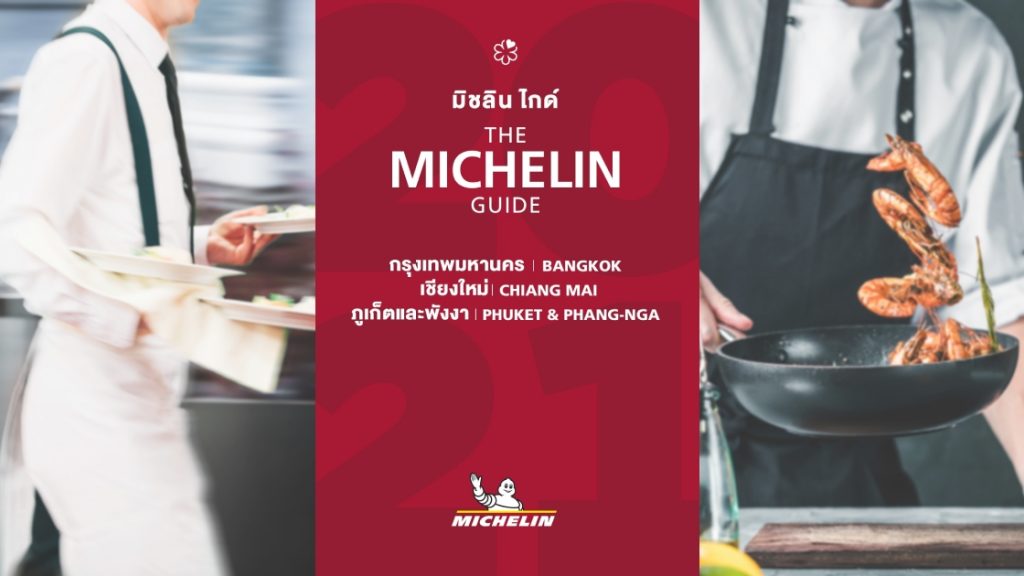
Take, for example, Roti Taew Nam, a communal breakfast spot in Phuket Old Town. Sit on simple stools at your pavement table and watch roti rolled, cooked over coals and served with eggs or banana, or plain with a side to homemade curry. Surprise your taste buds and wallet using the Michelin listings to guide your Phuket feasting.
What Are You Waiting For?
Now is the time to make the most of reopened and welcoming Phuket and all this glorious island has to offer. We’ve only scratched the surface of what awaits. Looking forward to seeing you soon!
About Michael Cullen
Michael is an Aussie now based in Thailand. As a freelance writer and compulsive traveller, he loves discovering new places, delving into the history, and experiencing the local food and culture wherever he ventures.
Check out his latest published articles: https://www.clippings.me/michaelcullen
See what he’s posting on social: www.instagram.com/travellingaussiesinasia/

